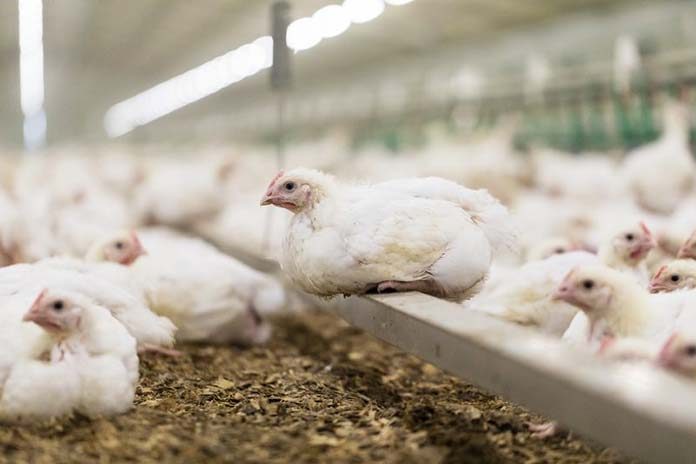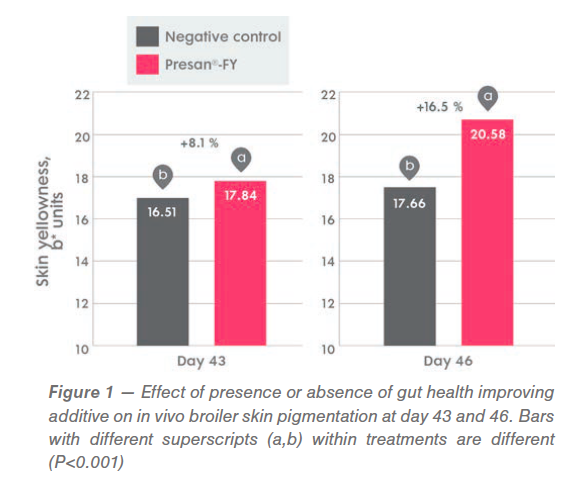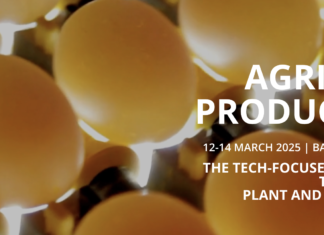
A Trouw Nutrition research trial conducted in Mexico has shown that a gut health improving additive, (Presan®-FY), containing a synergistic blend of organic acids, medium chain fatty acids (MCFAs), patented alkyl esters of MCFA’s, target release butyrates and a phenolic compound, improved skin pigmentation of broilers fed antibiotic growth promoter (AGP)-free diets.
Broiler production in Mexico is more than 300 million broilers per cycle (UNA, 2018) and the country’s marketplace poses some unique marketplace demands. Skin pigmentation is a key consideration in the Mexican marketplace, accounting for a significant portion of broiler meat sold in wholesale and retail sectors. As pigmentation is widely considered an indicator of a bird’s health status and meat quality, yellow skin color also correlates with producer economics. Pigmentation isn’t merely a matter of appearance, but presents economic consequences as a price penalty is imposed when pigmentation levels are not achieved. Beyond achieving yellow skin pigmentation in their flocks, Mexican poultry farmers continue to shift toward reducing antimicrobials in poultry production. With these trends in mind, Trouw Nutrition researchers evaluated a gut improving feed additive’s effectiveness at supporting broilers’ yellow skin pigmentation and antibiotic-free production.
Production environments and gut health can affect pigment absorption
Management practices, a broiler’s health status and diet composition can all interfere with pigmentation uptake and expression in broilers. In production environments using no or reduced levels of antibiotics, achieving required skin pigmentation levels can be particularly delicate due to gut health challenges. As Necrotic Enteritis (Clostridium perfringens) and/or coccidiosis damage the intestinal mucosa and thereby interfere with the absorption of pigments from the intestine, both conditions can result in broilers’ sub-optimal skin color, posing a threat to profitability.
Trial design and diet formulation reflect Mexican production practices

Trouw Nutrition researchers in collaboration with Integracion Y Desarrollo Agropecuario S.A. (INDEPESA) evaluated the effect of (Presan®-FY) on skin pigmentation under typical Mexican rearing conditions, but without AGPs and coccidiostats. A total of 2,700 Ross 308 male broilers were divided into 6 treatments of 9 replicates with 50 birds each.
Treatments were arranged in a factorial 3×2 design, with the first factor being the yellow pigment level (60, 85 and 110 ppm of Xantophylls). The second factor was the presence or absence of Trouw Nutrition’s gut health improving additive. Xantophylls (yellow pigment) and canthaxanthin (red pigment, 3 ppm) were added to the grower (11-28 days) and finisher (29-46 days) phase diets. Diets were based on yellow corn and soybean meal and adjusted to different growth phases. No AGP or coccidiostats were added to diets. Birds were vaccinated on the farm according to local standard practices and with a commercial live coccidiosis vaccine. In vivo skin pigmentation was measured in 27 birds per treatment. Intestinal morphology was measured in the duodenum and the intestinal absorptive area was calculated.
In a challenged condition without AGPs, skin pigmentation can be improved
Results showed the gut health improving additive significantly improved yellow skin pigmentation by 1.33 (+8.1%) and 2.92 (16.5%) b*units when compared to birds in the negative control treatment at days 43 and 46 respectively (p<0.001, Figure 1). In the trial, only the gut health improving additive treatments achieved the highest in vivo skin yellowness at day 46 (p<0.001, Figure 2).
*Gut health improving additive inclusion in starter, grower and finisher diets respectively

Remarking on the study, Trouw Nutrition Global Product Manager Yvonne van der Horst stated “While further research is required to understand the effects of (Presan®-FY) on pigment absorption, the improvements in skin yellowness shown in the study are presumably associated with its positive effect on gut integrity.” She noted previous research studies have shown a synergistic effect of gut health improving additive ingredients on improved intestinal morphology. In the Mexican trial, broilers fed the feed additive blend showed an increase in villus length and width compared to the negative control group. This effect led to a greater intestinal absorptive area, meaning nutrients – in this case, pigments – could be better absorbed. Intestinal morphology analysis showed that inclusion of the gut health improving additive significantly increased the intestinal absorptive area by 0.77 mm2 (+11%) per mm2 of internal duodenal wall (Table 1).

The trial results suggest adding the gut health improving additive can help producers lower the levels of xanthophylls (yellow pigments) from 110 ppm to 85 ppm while achieving similar pigment levels in broiler skin and also delivering gut health improving properties. “With the inclusion of this gut health improving additive both pigment absorption and nutrient absorption will be improved, which will result in an improved growth performance,” said van der Horst. “This trial in Mexico will help producers striving to meet various market demands across a variety of production environments. The findings from this trial once again show it is possible to meet markets’ unique demands and achieve AGP-free production goals while supporting birds’ gut health.”
















